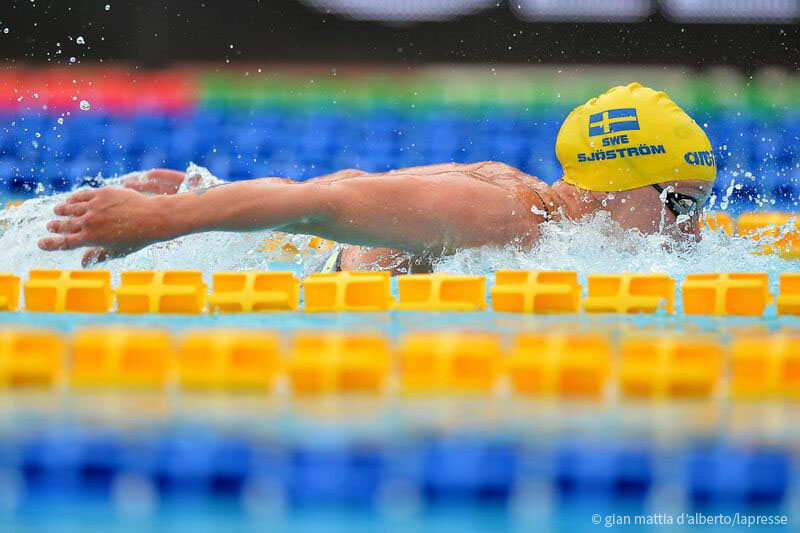When four-time world champion Sarah Sjostrom set a new world record in the 50m butterfly in July 2014, it was – says her coach Carl Jenner – the “closest thing to perfection”.
Those present in Boras that day witnessed Sarah go half a second inside compatriot Therese Alshammar’s old mark in a mindboggling 24.43 seconds.
For Carl it was a thing of beauty in a stroke he believes can transport the swimmer to another world.
“Once you get the timing and the strength of the stroke then it is butterfly and it feels like you are flying,” he says.
“I think it is the most beautiful stroke when people get it right, when people float and fly through the water. It is like an art form.”
Carl started coaching Sarah when she was 13 in Stockholm and he has helped guide her to four world and six European titles in the 50m and 100m butterfly as well as podium finishes in the freestyle and relays.
He is, she says, a butterflyer who is good at freestyle, with physical attributes of being tall with relatively big hands and feet and good co-ordination in the water.
“When she floats, she floats incredibly high,” he says. “She is quite a big lady, she has got quite a lot of muscle, she is quite tall but she floats like a cork. That is natural, you can’t teach that, she has that genetically, her body composition means she is able to float very high in the water.
“She has got a very flat butterfly compared to a lot of other competitors. She keeps her kick quite narrow and she doesn’t let her hips move up and down too much, the hips and the upper body try to be as thin as possible to create the power going through from the kick through the hips and forward.
“That is one thing we worked on a lot when she was younger – to keep her very flat. You need a lot of core strength to be able to do that, because if you have a powerful kick, which she has, and you let your hips go up and down you are losing some of the effects of the kick and if you are going to stop that there is a lot of pressure put on your lower back and on your stomach so core strength for Sarah and most butterflyers and most swimmers is vital.”
BODY POSITION
“It is how you can control you stroke, how you control your kick. If you can control your kick so the maximum amount of force goes forward and not up and down. If the hips go up and down too much, you are losing too much power forward so the flatter the hips can be the more power you can get from the kick.
“Fins are good because they put pressure on, you have a smaller kick and makes you more rigid in the water.
“(We also did) A lot of land work to make the core strong enough to be able to do what we wanted to do.”
ARMS
“With young kids on fly the thing is to put fins on them. It helps to keep their kick quite shallow so they are not kicking out of the water. It also gives them the power to be able to swim 25s or 50s with fly and start using their stroke timing. It is power, strength and a lot of timing. One-armed fly, short distances, fins on, fins off, push from the wall when you have got speed from the wall and do a few strokes to try and get their timing moving along, build as much as you can.”
TIPS FROM THE TOP
“I would look at how the stroke is built, how flat are you in the water, how many strokes do you take in every 50, what your stroke rates are. Look at what your land training is doing: if your core body strength is good but those things – stroke rate, stroke length, then you can start looking at are you being effective and also timing in your swimming. Where is your breathing, is your breathing flat, is your chin in the water? Because everything you want to do is to try and keep it flat as possible.”
